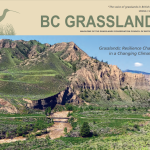The protection of carbon-storing peatlands, the better management of soil erosion problems and the world’s grasslands, and the planting of forests where appropriate would account for around 37% of all of the actions needed by 2030 as per the 2015 Paris Climate Change Agreement, according to a new study published in the journal The Proceedings of the National Academy of Sciences.
“Better stewardship of the land could have a bigger role in fighting climate change than previously thought,” as could “regreening of the planet,” according to the study in question.
“The estimates for nature’s potential, led by planting forests, were up to 30% higher than those envisaged by a UN panel of climate scientists in a 2014 report, it said,” Reuters reports.
“Trees soak up heat-trapping carbon dioxide as they grow and release it when they burn or rot. That makes forests, from the Amazon to Siberia, vast natural stores of greenhouse gases. Overall, better management of nature could avert 11.3 billion tonnes of carbon dioxide emissions a year by 2030, the study said, equivalent to China’s current carbon dioxide emissions from fossil fuel use.
“The Paris climate agreement, weakened by US President Donald Trump’s decision in June to pull out, seeks to limit a rise in global temperature to ‘well below’ two degrees Celsius (3.6 Fahrenheit) above pre-industrial times. Current government pledges to cut emissions are too weak to achieve the 2C goal, meant to avert more droughts, more powerful storms, downpours and heat waves. … The study said that some of the measures would cost $10 a ton or less to avert a ton of carbon dioxide, with others up to $100 a ton to qualify as ‘cost-effective’ by 2030.”
It may seem obvious, but also so routinely neglected that it is practically invisible in many discussions about stopping global warming. Here’s the succinct point, though: “If we are serious about climate change, then we are going to have to get serious about investing in nature,” stated Mark Tercek, CEO of The Nature Conservancy, which led the study.
I’ll also function as a devil’s advocate here of sorts by noting that such actions on their own won’t be enough to avoid catastrophic anthropogenic climate change. Rapid emissions reductions are still needed as well. That’s clear in the findings, but probably needs to be said for some people to understand how broad human change needs to be.
Many positive feedback loops around the world seem to have already kicked off in a big way — from the loss of albedo in polar regions, to the rapid melting of permafrost in others, to the rapid increase in large forest fires in others, to the drying out of forested areas, to the growing prevalence of peat fires (even in Greenland), to increasing strong flash droughts, etc.
In other words, in many aspects, “anthropogenic” climate change is likely already out of the potential control of humans. What remains possible, though, is the ability to limit the degree of instability that’s coming by limiting emissions and also by pursuing “re-greening” strategies like the ones discussed above.



